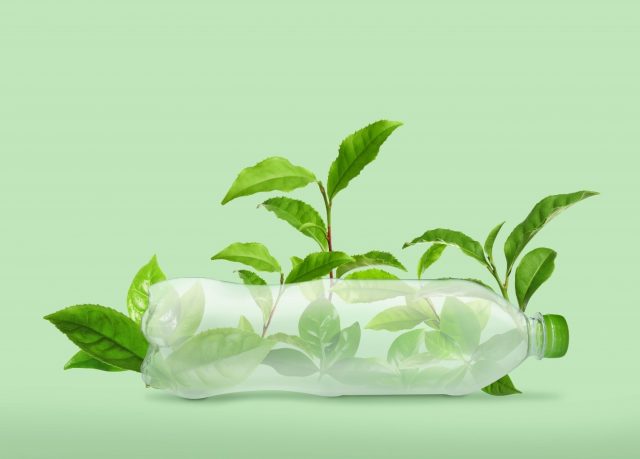In an era marked by increasing environmental awareness and the urgent need to address the persistent problem of plastic pollution, biodegradable plastics have emerged as a significant scientific breakthrough. These materials promise to help reduce the ecological footprint of consumer products, from packaging to single-use items, by decomposing them back into natural elements under the right conditions. Venky Murthy, CEO of Advanced United Refining, explores the latest advancements in biodegradable plastics through the lens of green chemistry, highlighting how these innovations contribute to environmental sustainability.
Understanding Biodegradable Plastics
Biodegradable plastics are designed to break down more quickly than conventional plastics, which can take hundreds of years to decompose in landfills. Venky Murthy, CEO of Advanced United Refining, explains that these plastics are made from various biobased and synthetic polymers and can decompose into water, carbon dioxide, and biomass with the help of microorganisms found in specific environments. The key categories include:
- Polylactic Acid (PLA): Derived from renewable resources like corn starch or sugarcane, PLA is one of the most common types of biodegradable plastics. It is often used in food packaging, disposable tableware, and even medical implants.
- Polyhydroxyalkanoates (PHA): Produced by microorganisms during fermentation of vegetable oils or sugars, PHA is both biodegradable and biocompatible, making it suitable for applications in the medical field as well as in packaging.
- Starch-based blends: These are typically composed of a mixture of starch and other biodegradable polymers, providing an economical and efficient solution for items like supermarket bags and food containers.
Innovations in Green Chemistry
The field of green chemistry is pivotal in advancing the technology of biodegradable plastics. Venky Murthy, CEO of Advanced United Refining, explains that it focuses on designing products and processes that minimize the use and generation of hazardous substances. Recent innovations in this area include:
- Enhanced compostability: Researchers are developing new blends of biodegradable plastics that can decompose faster and under more varied environmental conditions, including marine environments. This is crucial because many biodegradable plastics require industrial composting facilities to break down completely, which are not always accessible.
- Improved performance: Early versions of biodegradable plastics often had limitations in terms of strength and flexibility. Innovations in polymer blends and composites have led to enhanced mechanical properties, making these plastics competitive with traditional, petroleum-based counterparts in durability and versatility.
- Chemical recycling techniques: These methods involve breaking down used biodegradable plastics into their chemical constituents, which can then be reused to create new plastics. This approach not only supports the circular economy but also reduces the reliance on virgin materials.
Impact on Environmental Sustainability
Venky Murthy, CEO of Advanced United Refining, explains that the adoption of biodegradable plastics has the potential to significantly reduce the impact of plastic waste on the environment:
- Reduction in landfill waste: Biodegradable plastics can decrease the volume of waste requiring disposal, thereby extending the lifespan of landfills and reducing associated management costs.
- Lower carbon footprint: Since many biodegradable plastics are derived from renewable resources, their production often emits less carbon dioxide compared to conventional plastics made from fossil fuels.
- Wildlife protection: By breaking down more quickly, biodegradable plastics pose less of a threat to wildlife, which can suffer from ingestion or entanglement in persistent plastic waste.
Challenges and Future Directions
Venky Murthy, CEO of Advanced United Refining, emphasizes that despite their benefits, biodegradable plastics face several challenges that need to be addressed to enhance their market adoption and environmental impact:
- Cost-effectiveness: The production cost of biodegradable plastics is currently higher than that of conventional plastics, primarily due to the scale of production and raw material costs. Economic incentives and technological advancements are needed to make them more competitive.
- Public awareness and infrastructure: There is a need for greater public education on the appropriate disposal and composting of biodegradable plastics. Additionally, the infrastructure for collecting and processing these materials needs to be expanded to ensure that they are disposed of in a manner that allows them to biodegrade effectively.
- Regulatory frameworks: Governments and international bodies need to establish clear standards and certifications to manage the production, use, and disposal of biodegradable plastics, ensuring that these products truly benefit the environment.
The rise of biodegradable plastics represents a hopeful chapter in the ongoing story of material science and environmental stewardship. As green chemistry continues to evolve, these materials stand at the forefront of a shift towards a more sustainable future. Venky Murthy, CEO of Advanced United Refining, emphasizes that by addressing current limitations and expanding their use, biodegradable plastics can play a crucial role in reducing the environmental impact of global plastic consumption. As research advances and awareness grows, the potential for these materials to significantly alter our environmental landscape continues to increase, marking a pivotal moment in the battle against plastic pollution.








